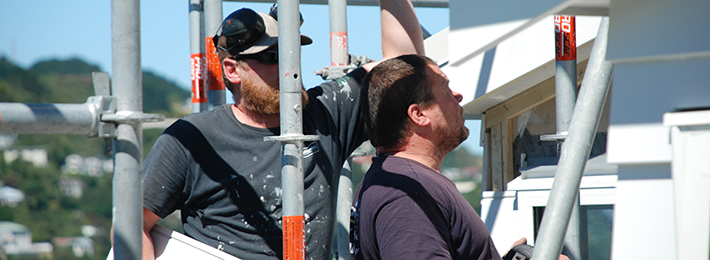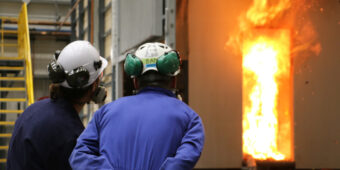Take the lead on health and safety
14 Mar 2016, Featured, Prove Your Know How, Safety

The new Health and Safety at Work Act comes into force on 4 April and it’s important to make sure you understand how the changes will affect your business
Construction is a $30 billion dollar industry that generates about 6% of New Zealand’s economic activity and employs almost 200,000 people.
However, it’s also made up of many small businesses – 87% of construction companies employ fewer than ten people. For many of those businesses, the owner will be the director, chief executive, chief financial officer, site foreman, company secretary and possibly orders the tea every second day.
It’s a hands-on business. Everyone’s busy, everyone gets stuck in. In a way, that should make it easier to keep on top of health and safety. The management and directors – at least in smaller operations – are less likely to be cut off behind a desk at head office. Even if you’re based at the office project-managing, you’re likely to have come up through the trades and have a good understanding of the realities of construction.
That practical knowledge of the job at the management level is invaluable for small and medium construction companies, because when it comes to health and safety, everyone needs to play their part – from the company owner to the casual labourer.
Health and safety is everyone’s business
There needs to be leadership at all levels, which starts at the top with directors and chief executives. Under the new law, they have to do ‘due diligence’ for health and safety in much the same way as they are expected to for financial reporting. After all, directors and chief executives will have huge influence over resourcing, company policy, setting performance targets and a myriad of other things that can affect health and safety.
Directors are not expected to be personally on site ensuring that workplace risks such as working at height and asbestos are properly managed, but they need to ensure that their business is well set-up to handle health and safety. That’s more than just checking that there’s a health and safety policy; they need to know that it’s working and have good reporting systems.
For larger construction firms, that might mean the board sets up a health and safety subcommittee – as recommended by the Financial Markets Authority. Lawyers Chapman Tripp suggest that boards should make health and safety a standing item on their agendas and should consider the health and safety implications of decisions on timeframes, budgets and bonuses.
Health and safety is not something you do once and then file away on a shelf – there needs to be ongoing vigilance.
It’s not just one-way traffic, though – workers also need to take responsibility for acting in a safe and healthy way. This means wearing the right gear (and reminding a mate who isn’t), following proper health and safety processes and taking five to plan how to do a task safely when a situation changes.
Worker engagement – and participation
The new law also introduces a requirement on all businesses to engage with workers on health and safety matters. It doesn’t set in stone what form that engagement must take. That will vary from industry to industry and workplace to workplace. However, the law is clear – if it relates to health and safety then there needs to be meaningful discussion with workers.
As well as asking workers for feedback on specific questions, all businesses need to have clear, well-known ways for workers to raise suggestions or issues on a day-to-day basis. Many construction companies already start the day with a toolbox talk – that’s one simple way to get everyone involved in discussing health and safety, spotting issues and suggesting solutions.
Any business can choose to have a Health and Safety Representative (HSR) or Committee. These are examples of clear ways for workers to raise suggestions and can help the business keep on top of its legal obligations. Larger businesses (with 20 or more workers) and those in high-risk industries, which includes construction, must arrange an HSR election if requested by a worker. In addition, if an HSR or five or more workers ask for a Health and Safety Committee (HSC), then the business must formally consider that request.
Get ready now
While the law is changing, the fundamentals of keeping people safe on a building site are not. The law doesn’t change the way to put up a scaffold or set up an exclusion zone around a crane, but the Act does require businesses to take identifying and managing risks seriously.
To be clear, that doesn’t mean you are expected to eliminate all risks at any cost. That’s not possible, particularly in an industry that involves heavy machinery, power tools and working at height. However, you need to have good processes for identifying risks and putting in place sensible controls.
The trick is to make sure health and safety is integrated into your business at every level. Keeping an eye out for one another should be part of everyone’s daily routine. If it’s not already, now is the time to take action. Not only will you and your workers be safer and healthier, so will your business.
To find out more about the Health and Safety at Work Act, including details about worker engagement and participation, visit the WorkSafe website at http://www.worksafe.govt.nz/hswa.
Register to earn LBP Points Sign in



